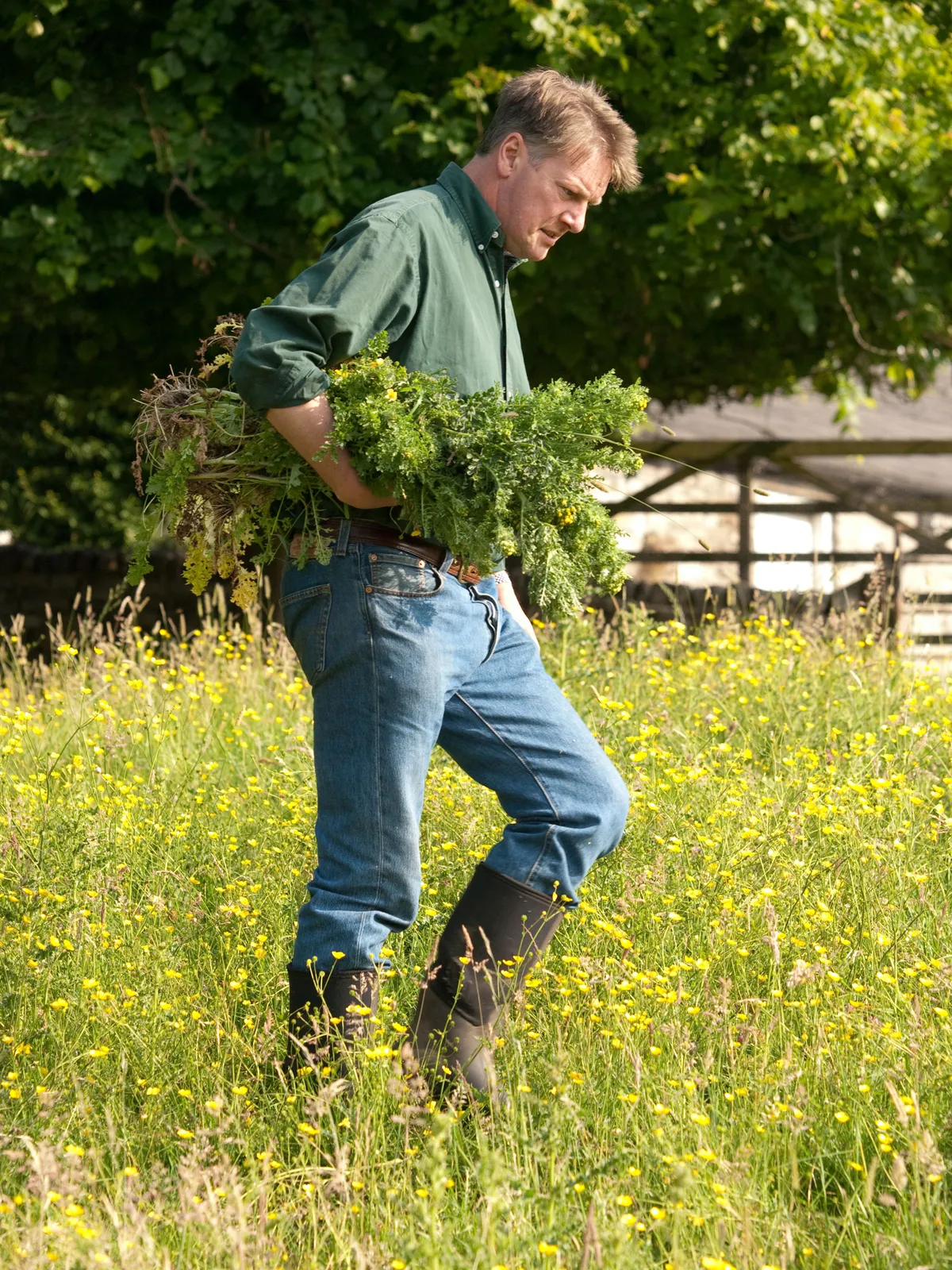Ragwort is one of the most divisive plants in the countryside. It contains chemicals that are toxic to livestock and has been blamed for many deaths of horses and other animals.
Yet, conservationists say it’s a native wildflower vital for pollinating insects.
Learn what ragwort is, where it can be found, benefits and the dangers associated with it in our expert ragwort guide.
What is ragwort?
Ragwort is a tall plant that grows to 90cm high and bears large, flat-topped clusters of yellow daisy-like flowers from July to October. Nineteen species of the Ragwort genus Senecio are found in the wild in Britain, but most of these are garden escapes or other introductions.
The main ‘weed’ species is the common ragwort Senecio jacobaea, a native species that thrives where bare ground or thin vegetation allows the development of seedlings. It is also known as ‘stagger weed’.
How common is ragwort?
Experts suggest that once ragwort is on certain areas of land, it can be really difficult to manage. A single plant can contain thousands of seeds and these can disperse into fields.
Many farmers take preventative measures to reduce the risk of ragwort spreading on the land they own, but it is hard to reduce the risk fully as it often appears on areas that are less easy to control, such as roadside verges.
Ragwort plants have flat-topped, buttercup yellow flowers that generally appear in summer and stay until mid autumn (Photo by: DEAC / DELU via Getty Images)
Why is ragwort important?
The charity Buglife says that ragwort is a long-standing and important part of our native flora in Britain.
Among the 30 species of bee, beetle, other insects and fungi supported by ragwort are the daisy carpenter bee and the cinnabar moth, meaning it has significant benefits to conservation. As a result, while farmers understand that ragwort can be dangerous to livestock, many recognise ragwort for biodiversity and don’t advocate blanket removal.
Is ragwort poisonous?
Ragwort contains toxins called pyrrolizidine alkaloids. These, in sufficient quantities, can cause liver poisoning in horses and livestock. It is a cumulative poison that eventually leads to the rapid onset of symptoms before death.
However, the symptoms are variable and resemble those of a number of other diseases.
- Plants poisonous to horses: from heart issues to blindness and even death, these toxic plants can cause an array of issues for equines
- Poisonous plants to cats: Cats Protection warn about the deadly plants to avoid if you have cats
- Poisonous plants to dogs: vet warns about deadly flowers, trees, shrubs and bulbs
- Dangerous weeds: If these criminal weeds are in your garden, or on your land, you could find yourself in a legal battle
If horses ingest ragwort, they could suffer low-level digestion of the weed for months before they start to show signs of distress. According to invertebrate charity Buglife, the lethal volume of Ragwort is around 7% of body weight for horses; cattle are also prone to poisoning but sheep are thought to be less susceptible.
"Ragwort is a poisonous weed containing toxic pyrrolizidine alkaloids, and can seriously harm grazing animals like horses, cattle, sheep and goats, if eaten," he says.
"Whilst most animals instinctively steer clear of it, they can be tempted when food is scarce, and the plant can sometimes become inadvertently mixed with stored hay or silage", says veterinary surgeon Malcolm Morley, from the British Veterinary Association.
"The effects of ragwort toxicity are not immediate; rather they gradually build up over time, eventually causing severe, irreversible damage to the liver.
"Liver failure caused by ragwort ingestion typically shows up with non-specific symptoms, such as poor health, weight loss and a general failure to thrive. In more severe cases, affected animals may exhibit heightened sensitivity to light (photosensitivity) or neurological signs like dullness, disorientation, and even collapse.

Can you control ragwort?
Non-chemical options for preventing the spread of the plant are limited, though Countryfile editor Fergus Collins remembers being paid to pull ragwort from farmland in Somerset as a teenager.
These days, farmers typically apply the herbicide glyphosate, and experts suggest it is vital that plants and roots are removed before they seed and spread the weed further, or that the rosettes are spot-sprayed with herbicide. However, the use of glyphosate is controversial – the World Health Organisation (WHO) has published reports that conclude glyphosate is “probably carcinogenic” to humans, and the herbicide has been the subject of several court cases around the world relating to cancer.
Conservationists, such as Friends of the Earth, would prefer the affected area to be fenced off and the plants allowed to go to seed.

What is Oxford ragwort?
Travel on the Great Western Railway routes west of Oxford and you will see a distinctive yellow plant on the edges of tracks and verges.
Although this looks like the ragwort that causes such anxiety for equine owners, it is in fact Oxford ragwort (Senecio squalidus) a species introduced from the slopes of Mount Etna in Sicily in the late 17th century.
After escaping from Oxford Botanic Garden, it has spread to most parts of the UK, where it favours disturbed habitats, such as building sites, roadsides and beside railway lines.
Is removing ragwort legal?
Ragwort is covered by both the Weeds Act 1959 and the Ragwort Control Act 2003, the latter of which provides a code of practice for preventing the spread of the plant.
However, there’s no compulsion in these acts for landowners to remove ragwort, although they may be ordered to do so by local authorities or the Department for Environment, Food and Rural Affairs (DEFRA).
While there is consensus that ragwort poses some threat to domestic animals, it is difficult to assess the actual level of danger and impossible to say how many horses and other animals are affected in the UK without more detailed research. Therefore, conservationists argue that removing a native wildflower impoverishes our natural world, and therefore should not be done.
To find out more about ragwort, The British Horse Society provides an advisory ragwort toolkit online.
Main image: Ragwort in a green field/Credit: RuudMorijn via Getty Images

